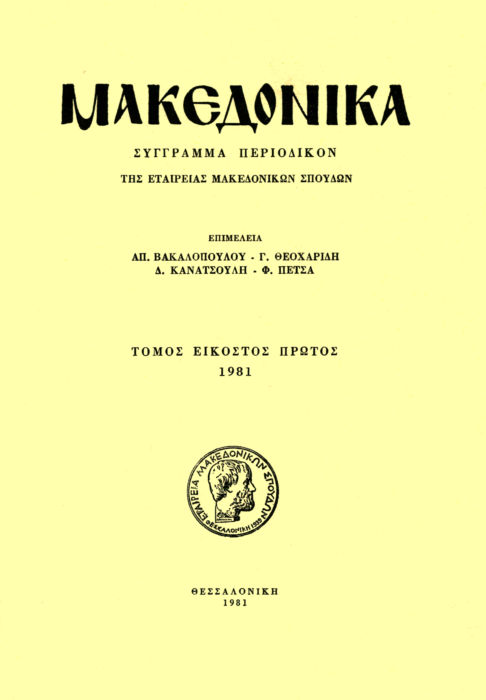The place of ancient Scapte Hyle
Abstract
Those who have attempted to identify the ancient Scapte Hyle, which
was the most famous centre of gold-mining on the mainland opposite Thasos
in the 6th and 5th centuries B.C., usually lack personal knowledge of the topography
of this area and are not familiar enough with the evidence of ancient
authors. These are the two main fields where the contribution of this article
will be confined.
Most of the scholars have placed Scapte Hyle on or around the Mount
Pangaeum and especially on the NE side of it. There is, however, a disagrement
concerning the exact location of it. It has been situated near the monastery
of Eikosiphoinissa, in the village called Palaeochori, on the hills between
Palaeochori and Nikisiani, and elsewhere. The author of this article believes
that Scapte Hyle was not a town but a wider area which comprised the valleys
of both Nikisiani and Palaeochori. The centre, however, of gold-production,
especially in the period when Scapte Hyle flourished, was Nikisiani. Some
of the indications for this are the following:
a) The heaps of slag («scoriae») are more extensive here than in the neighbouring
places.
b) Herodotus says that the tribe of Satrai, who had the main share in the
gold-production, used the steep rocks of Pangaeum as a refuge when attacked
by an enemy. The side of this mountain facing Nikisiani is the most inaccessible
of all.
c) There is plenty of water in this valley.
d) There are names of places, like «Silver holes», «The water of gold» and
so on, which might be reminiscences of the existence of metal-workings in this
area.
e) Scapte Hyle means «dug wood» and this is the most richly wooded
side of Pangaeum.
Article Details
- How to Cite
-
Τσεκουράκης Δ. (1981). The place of ancient Scapte Hyle. Makedonika, 21(1), 76–92. https://doi.org/10.12681/makedonika.428
- Issue
- Vol. 21
- Section
- Articles

This work is licensed under a Creative Commons Attribution-NonCommercial-ShareAlike 4.0 International License.
Authors who publish with this journal agree to the following terms:
- Authors retain copyright and grant the journal right of first publication with the work simultaneously licensed under a Creative Commons Attribution Non-Commercial License that allows others to share the work with an acknowledgement of the work's authorship and initial publication in this journal.
- Authors are able to enter into separate, additional contractual arrangements for the non-exclusive distribution of the journal's published version of the work (e.g. post it to an institutional repository or publish it in a book), with an acknowledgement of its initial publication in this journal.
- Authors are permitted and encouraged to post their work online (preferably in institutional repositories or on their website) prior to and during the submission process, as it can lead to productive exchanges, as well as earlier and greater citation of published work (See The Effect of Open Access).



